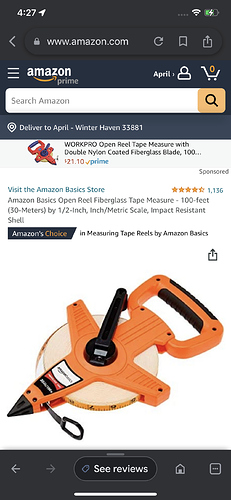I am looking for something the help me measure between the jumps when I am setting combinations at home. I am usually by myself, so not requiring 2 people to operate whatever it is, is preferred.
I am finding that I don’t necessarily trust pacing them off to set them.
I have used a fiberglass long tape - needs 2 people, & if there is a breeze it is hard to keep the tape straight for the 4-6stride combination lengths.
I have had a laser tape, but it never could see the opposite jump.
Had a wheel 100 years ago, I can’t remember if it worked well or not.
So, Will a 100’ steel tape work? Is there a way to skewer it into the ground so I can run it 84’ out to the next jump on my own? Are there better laser tapes that actually would work? How about the wheels, willing to try again if they are worthwhile.

